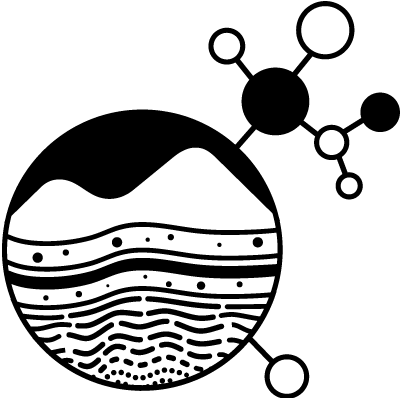Partnership between IGSN and DataCite
SESAR is a founding member of the IGSN e.V. It was recently announced that the IGSN e.V. will be entering a partnership with DataCite.
Buys, M., & Lehnert, K. (2021). Partnership between IGSN and DataCite. DataCite. https://doi.org/10.5438/7Z70-1155
Announcing ORCiD Integration into MySESAR
With the release of SESAR v7.5, ORCiD has been added as a method to login to MySESAR. In order to use ORCiD to login to MySESAR, you must make sure your ORCiD is in your MySESAR account profile.
To add your ORCiD to your MySESAR account profile
- Click "My Account" tab in MySESAR
- Enter your ORCiD
- Click "Update User Profile" on the bottom of the page
- Log out of MySESAR
You can now login to MySESAR using your ORCiD account.
If your MySESAR account is an institutional account that should be tied to an individual's ORCiD, you can continue to use your GeoPass account to login to MySESAR. Recommendations for institutional accounts can be found on the Resources for Institutions Page.
New name for IGSN
A new name, a new role for the IGSN Organization and Identifier
SESAR is an ‘Allocating Agent’ for the IGSN e.V., the implementation organization of the IGSN. We provide IGSNs during the sample registration process, and we maintain the metadata profile pages that an IGSN ‘resolves’ to. In addition to the registration metadata required by the IGSN e.V., SESAR collects and maintains descriptive metadata unique to the SESAR community.
SESAR is excited to share news about some changes to the IGSN e.V.:
The IGSN e.V. Executive Committee announces the new name of the IGSN e.V.: International Generic Sample Number Organization e.V. The new name was approved by the IGSN e.V. General Assembly. The IGSN ID will now be called the International Generic Sample Number to reflect its expanding scope and utilization. Through the partnership between the IGSN e.V. and DataCite, IGSN IDs can now be used in any discipline to identify physical objects.
The mission of the International Generic Sample Number Organization e.V. is to provide guidance on best practices and standards for FAIR samples across disciplines. FAIR samples follow the principles of findable, accessible, interoperable and reusable research resources.
SESAR will continue to provide IGSN registration services as part of our broader suite of services. As the partnership between the IGSN e.V. and DataCite evolves, we will share any news or impacts with our members.
For additional information see the following resource:
SESAR v8.0.1 Released
August 2021
SESAR version 8.0.1 is released
On August 26th, we released a new version of SESAR. The release includes an update to our file upload tool. You can review the full list on the SESAR Release Notes page.
If you have questions about SESAR², please contact info@geosamples.org.
SESAR² 8.0.0 Released
July 2021
SESAR² version 8.0.0 is released
On July 22nd, we released a new version of SESAR². The release includes a number of new features, enhancements, and improvements.
We have added a new feature which allows you to login into your MySESAR Dashboard using your ORCiD. If you have not already, please add your ORCiD ID to your MySESAR profile to use this new feature. We will continue to support GeoPass for shared accounts and for users who do not have ORCiDs. For more information, see our FAQ section on ORCiDs and MySESAR.
To ensure quality of registered sample metadata, we have added a new feature where new users will need to request access to our Web Services. SESAR² curators will review metadata mapping with new users before permitting access to the Web Services. Existing accounts do not need to undergo this review.
The release also includes a number of enhancements and bug fixes. You can review the full list on the SESAR² Release Notes page.
If you have questions or comments about the new capabilities or SESAR² in general, please contact info@54.224.199.193
SESAR² Maintenance scheduled for July 22nd
SESAR² is scheduled for a new release which will impact services on Thursday, July 22nd, 2021, between 9:00am and 5:00pm EDT. During the scheduled release, the MySESAR dashboard, SESAR² web services, and the SESAR² Catalog Search will be unavailable.
In the release, we are adding a feature which will allow you to log into MySESAR using your ORCiD. To prepare for the release, please add your ORCiD to your user profile.
If you have included your ORCiD in your EarthChem account, we have already migrated your ORCiD to your MySESAR account. Please verify that the information is correct.
If your account is shared by multiple individuals (e.g., for a sample repository), please do not add an ORCiD to the profile. Please check our best practices for shared MySESAR accounts for more information.
We strongly encourage you to use ORCiD to log into MySESAR. In the foreseeable future we will continue to support GeoPass for shared accounts and for users, who do not have ORCiDs.
If you have questions regarding the addition of ORCiD as a login method for MySESAR please email info@54.224.199.193
Announcing SESAR²'s new website!
SESAR² is happy to announce that its new website has been launched on May 3, 2021. The new website provides updates to content and structure that document SESAR²’s mission to serve all members of the greater sample community and to support, in the best way possible, community-based efforts to establish and promote best practices for registering sample metadata. The new web site features an improved user interface with clearer navigation and concise communication. Updates made to the website highlight the diverse range of backgrounds that our users come from.
Newly featured content on the website includes:
- Resources pages containing new content tailored for Researchers and Institutions with information on best practices for SESAR²’s samples registration, use of the IGSN, and metadata management services and a new space on GitHub for Developers.
- Updated Tutorials for how to use MySESAR and register samples.
- Information about the benefits and services that SESAR² provides, including its role as an IGSN allocating agent.
We hope that you enjoy clicking around our new website. If you have any comments or feedback regarding the website please fill out this form.
SESAR 7.4.2 Released
November 2020
SESAR version 7.4.2 is released
On November 24th, we released a new version of SESAR. The release includes new enhancements and improvements.
Enhancements include additional validations to the batch registration process and updated security features (moving select pages from http to https). Improvements include minor bug fixes to the edit page for managing sample metadata and the processes for transferring ownership of large scale numbers of samples.
You can read the full list of new enhancements and bug fixes on the SESAR Release Notes page.
SESAR Updates, July 2020
SESAR 7.4.1 Released
July 2020.
SESAR version 7.4.1 is released
On July 27th, we released a new version of SESAR. The release includes new features, enhancements and improvements.
New features include adding JSON-LD to our sample profile pages and a new REST API. General enhancements and improvements include updates to our map search and minor bug fixes in our image upload tool and web services.
You can read the full list of new features and enhancements on the SESAR Release Notes page.
If you have any questions or comments, please contact info@geosamples.org.
MARS Group Awarded an ESIP FUNding Friday Mini-Grant
SESAR² Curator Sarah Ramdeen and Scripps Institution of Oceanography’s Geological Collections Manager Alex Hangsterfer were awarded an ESIP FUNding Friday mini-grant at this year’s ESIP Summer Meeting. The funds from the grant will be used to support MARS (Middleware for Assisting with the Registration of Samples), a software developed by Dr. Jim Bowring and his group of undergraduate students at the College of Charleston.
MARS is an open-source web application that streamlines the registration of samples in SESAR² to obtain IGSNs, i.e. globally unique identifiers, for the samples and make them Findable, Accessible, Interoperable, and Reusable (“FAIR”). The application allows investigators or sample curators to submit sample metadata to SESAR² using their own sample metadata files, rather than having to transfer sample metadata to the SESAR² batch registration template. MARS currently supports mapping of NOAA’s Index to Marine and Lacustrine Geological Samples (IMLGS) metadata to the SESAR² schema. Version 1 of MARS will be released in the coming months.
The MARS team is working to expand the functionality of the tool to allow any user to create a map between their preferred sample metadata format and SESAR²’s to broaden the utility of the tool beyond the marine and lacustrine sample community. The funding from ESIP will be used to support Dr. Bowring’s students as they continue this effort. At the ESIP Summer Meeting several sample repositories already expressed interest in adopting the tool.
Read more about the history of MARS and SESAR² here, and look for more updates in the coming months!
SESAR 7.4.0 Released
February 2020.
SESAR version 7.4.0 is released
On February 6th, we released a new version of SESAR. The release includes a number of new features and enhancements.
New features include a new file upload tool, the ability to export SESAR sample data for EarthChem Library templates, and metadata completeness indicators on the sample landing and search results pages. General enhancements include the generation of shareable URLs for groups on the My Groups page, and additional validations to the registration process. And the web services now support publication URL deletion and retrieving an IGSN by sample name for a specific user code. See our Web Services page for updated documentation.
You can read the full list of new features and enhancements on the SESAR Release Notes page.
If you have any questions or comments, please contact info@geosamples.org.

